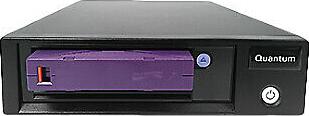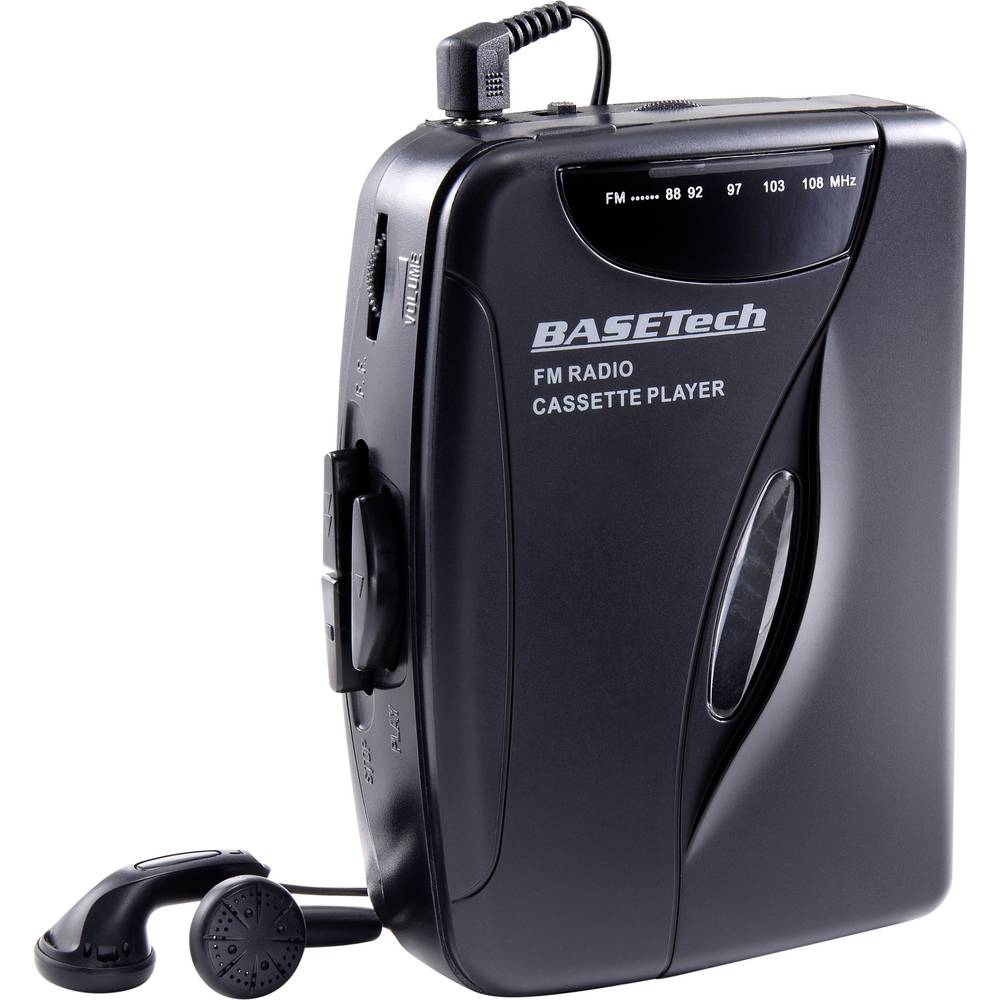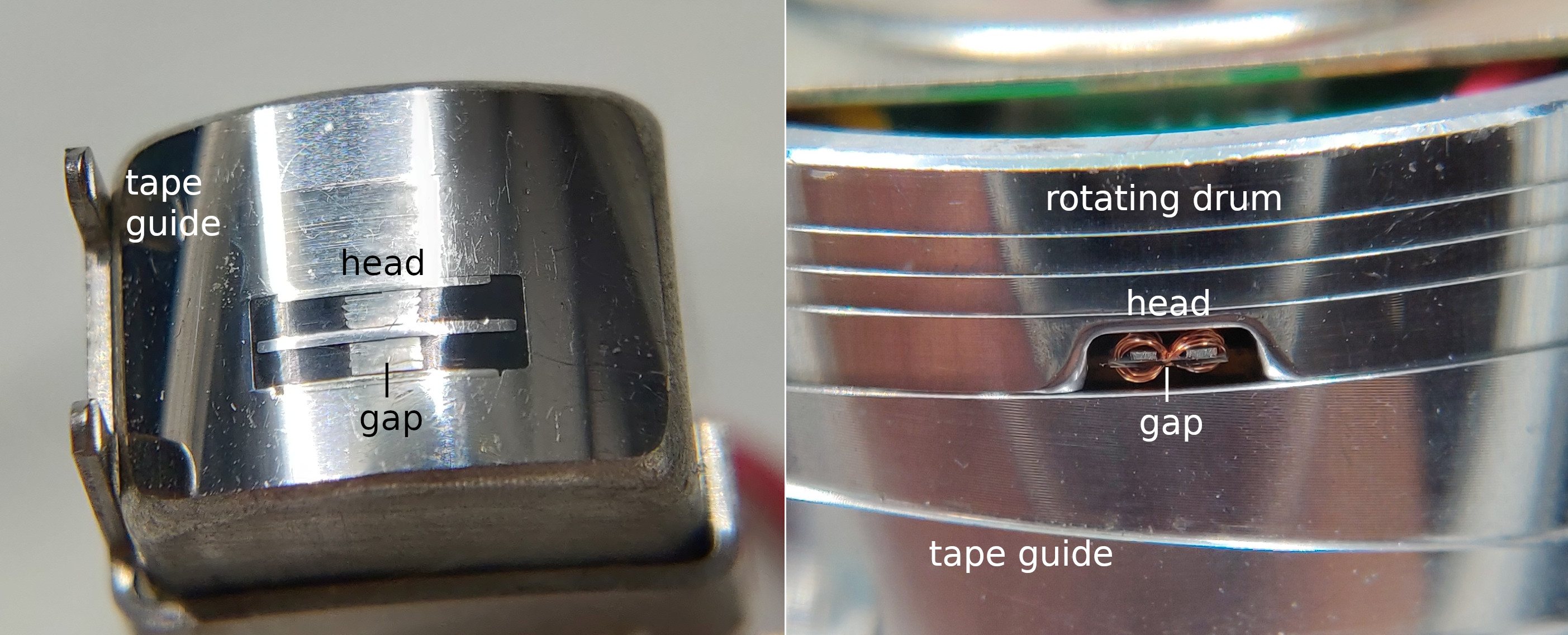I had heard that tape is still the best medium for storing large amounts of data.
well, "best" is always a reduction to a single set of optimization parameters (e.g. cost per bit, durability, ...) and isn't ever "universally true".
I can see, for example, that "large" is already a relative term, and for a small office, the optimum solution for backing up "large" amounts of data is a simple hard drive, or a hard drive array.
For a company, backup tapes might be better, depending on how often they need their data back. (Tapes are inherently pretty slow and can't be accessed at "random" points)
So I figured I can store a relatively large amount of data on a cassette tape.
Uh, you might be thinking of a Music Casette, right? Although that's magnetic tape, too, it's definitely not the same tape your first sentence referred to: It's meant to store an analog audio signal with low audible distortion for playback in a least-cost cassette player, not for digital data with low probability of bit error in a computer system.
Also, Music Cassettes are a technology from 1963 (small updates afterwards). Trying to use them for the amounts of data modern computers (even arduinos) deal with sounds like you're complaining your ox cart doesn't do 100 km/h on the autobahn.
But after reading up about it for a bit it turns out that they can store very small amounts of data. With baud rates varying between 300 to 2400 something between ~200KB to ~1.5MB can be stored on a 90 minute (2x45min) standard cassette tape.
Well, so that's a lot of data for when music-cassette-style things were last used with computers (the 1980s).
Also, where do these data rates drop from? That sounds like you're basing your analysis on 1980's technology.
These guys can store 90 minutes of audio. Even if we assume the analog audio quality on them was equivalent of 32Kbps that's about 21MB of data.
32 kb/s of what, exactly? If I play an Opus Voice, Opus Music or MPEG 4 AAC-HE file with a target bitrate of 32 kb/s next to the average audio cassette, I'm not sure the cassette will stand much of a chance, unless you want the "warm audio distortion" that casettes bring – but that's not anything you want to transport digital data.
You must be very careful here, because audio cassette formulations are optimized for specific audio properties. That means your "perceptive" quality has little to do with the "digital data capacity".
I have a hard time believing what I listened to was 300bps quality audio.
again, you're comparing apples to oranges. Just because someone 40 to 50 years ago wrote a 300 bits per second modem that could reconstruct binary data from audio cassette-stored analog signals, doesn't mean 300 bps is the capacity of the music cassette channel.
That's like saying "my Yorkshire Terrier can run 12 km/h on this racetrack, therefore I can't believe you can't have Formula 1 cars doing 350 km/h on it".
I read about the Kansas City standard and I can't understand why the maximum frequency they're using is 4800Hz yielding a 2400 baud. Tape (according to my internet search) can go up to 15KHz. Why not use 10KHz frequency and achieve higher bauds?
Complexity, and low quality of implementation and tapes. I mean, you're literally trying to argue that what was possible in 1975 is representative for what is possible today. That's 45 years in the past, they didn't come anywhere near theoretical limits.
Why do all FSK modulations assign a frequency spacing equal to baud rate?
They don't. Some do. Most modern FSK modulations don't (they're minimum shift keying standards, instead, where you choose the spacing to be half the symbol rate).
In the Kansas example they are using 4800Hz and 2400Hz signals for '1' and '0' bits. In MFSK-16 spacing is equal to baud rate as well.
Again, 1975 != all things possible today.
Why don't they use a MFSK system with a 256-element alphabet? With 20Hz space between each frequency the required bandwidth would be ~5KHZ. We have 10KHz in cassette tape so that should be plenty. Now even if all our symbols were the slowest one (5KHz) we would have 5*8 = 40000 baud. That's 27MB of data. Not too far from the 21MB estimation above.
Well, it's not that simple, because your system isn't free from noise and distortion, but as before:
- Low cost.
They simply didn't.
If tape is so bad then how do they store Terabaytes on it?
You're comparing completely different types of tapes, and tape drives:
This 100€ LTO-8 data backup tape

vs this cassette tape type, of which child me remembers buying 5-packs at the supermarket for 9.99 DM, which, given retail overhead, probably means the individual cassette was in the < 1 DM range for business customers:

and this 2500€ tape drive stuffed with bleeding edge technology and a metric farkton of error-correction code and other fancy digital technology

vs this 9€ casette thing that is a 1990's least-cost design using components available since the 1970s, which is actually currently being cleared from Conrad's stock because it's so obsolete:

At the end of the 1980s, digital audio became the "obvious next thing", and that was the time the DAT cassette was born, optimized for digital audio storage:

These things, with pretty "old-schooley" technology (by 2020 standards) do 1.3 Gb/s when used as data cassettes (that technology was called DDS but soon parted from the audio recording standards). Anyway, that already totally breaks with the operating principles of the analog audio cassette as you're working with:
- in the audio cassette, the read head is fixed, and thus, the bandwidth of the signal is naturally limited by the product of spatial resolution of the magnetic material and the head and the tape speed. There's electronic limits to the first factor, and very mechanical ones to the second (can't shoot a delicate tape at supersonic speeds through a machine standing in your living room that's still affordable, can you).
- in DAT, the reading head is mounted on a rotating drum, mounted at a slant to the tape – that way, the speed of the head relative to the tape can be greatly increased, and thus, you get more data onto the same length of tape, at very moderate tape speeds (audio cassete: ~47 mm/s, DAT: ~9 mm/s)
- DAT is a digital format by design. This means zero focus was put into making the amplitude response "sound nice despite all imperfections"; instead, extensive error correction was applied (if one is to believe this source, concatenated Reed-Solomon codes of an overall rate of 0.71) and 8b-10b line coding (incorporating further overhead, that should put us at an effective rate of 0.5).
Note how they do line coding on the medium: This is bits-to-tape, directly. Clearly, this leaves room for capacity increases, if one was to use the tape as the analog medium it actually is, and combined that ability with the density-enabling diagonal recording, to use the tape more like an analog noisy channel (and a slightly nonlinear at that) than a perfect 0/1 storage.
Then, you'd not need the 8b-10b line coding. Also, while re-designing the storage, you'd drop the concatenated RS channel code (that's an interesting choice, sadly I couldn't find anything on why they chose to concatenate two RS codes) and directly go for much larger codes – since a tape isn't random access, an LDPC code (a typically 10000s of bits large code) would probably be the modern choice. You'd incorporate neighbor-interference cancellation and pilots to track system changes during playback.
In essence, you'd build something that is closer to a modern hard drive on a different substrate than it would be to an audio cassette; and lo and behold, suddenly you have a very complex device that doesn't resemble your old-timey audio cassette player at all, but a the modern backup tape drive like I've linked to above.










4- If tape is so bad then how do they store Terabaytes on it?It's like comparing writing a novel on a roll of toilet paper or in a large notebook... The medium and sizes are different. Toilet paper isn't optimized for writing, likewise audio cassettes are optimized for analog recording, not digital. $\endgroup$